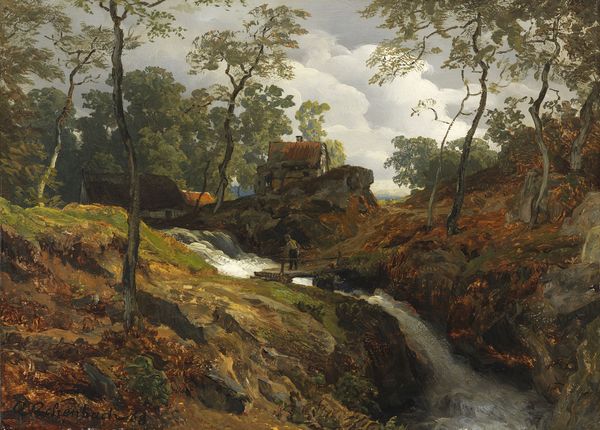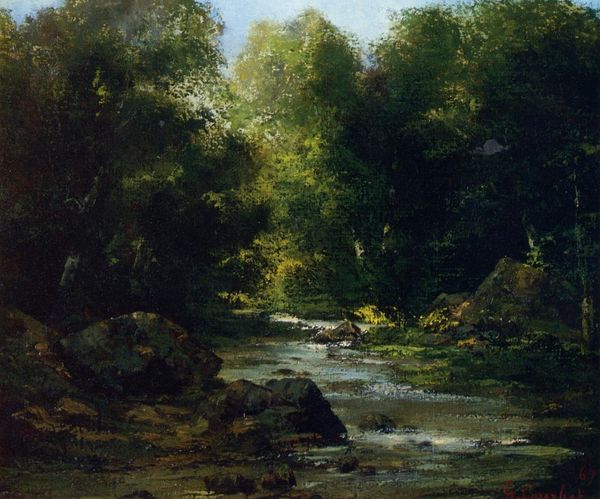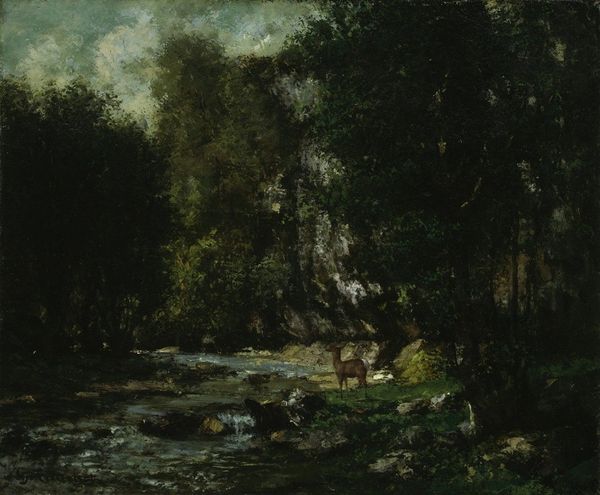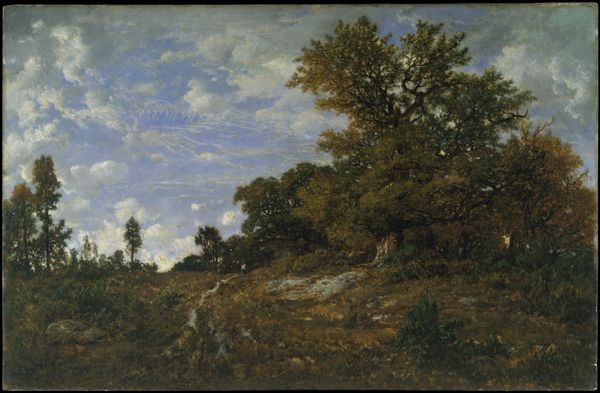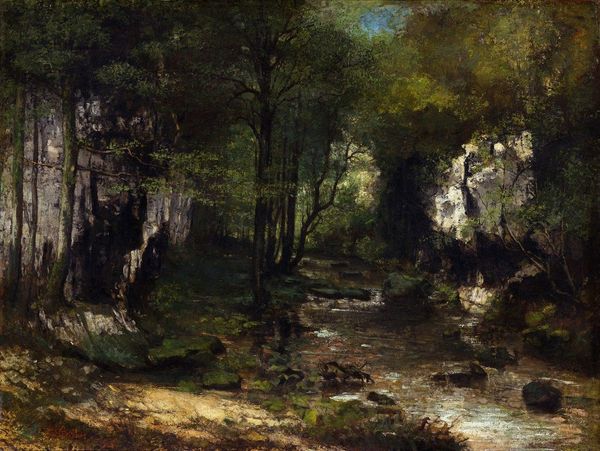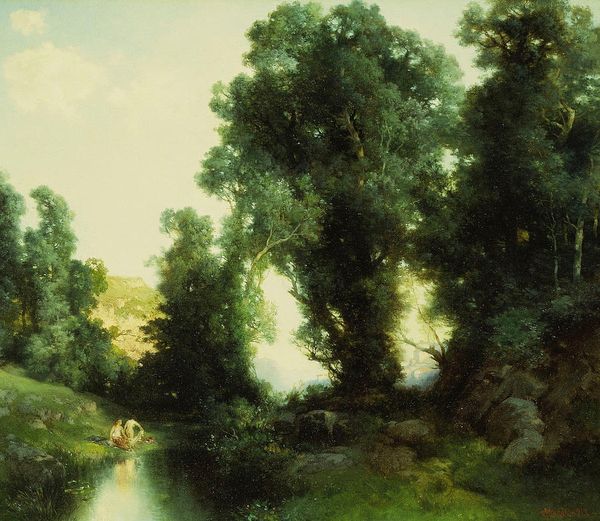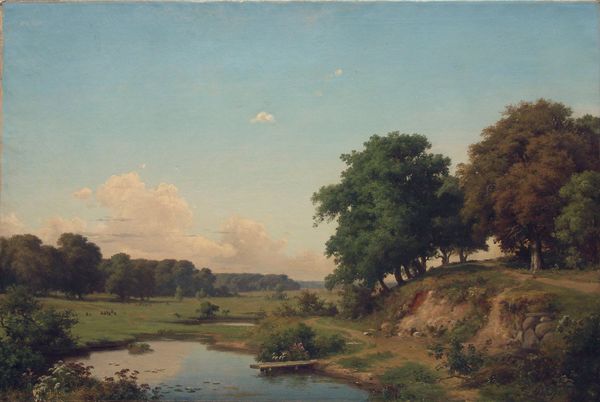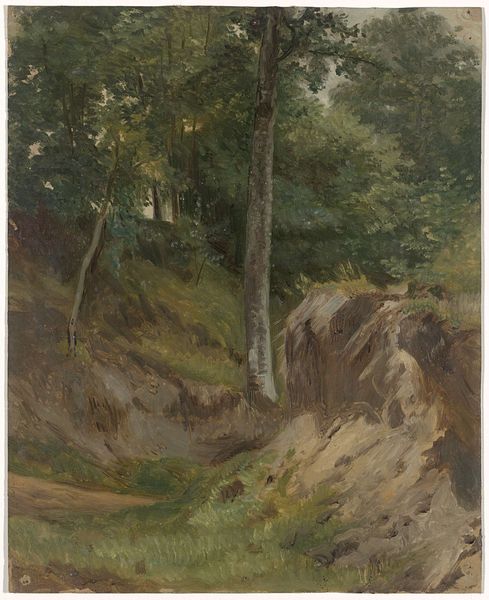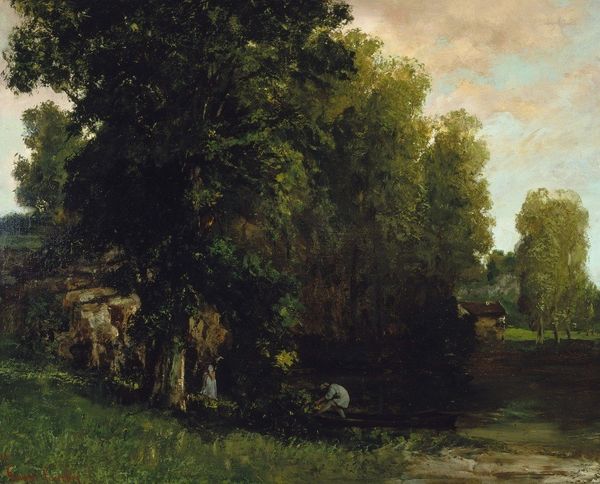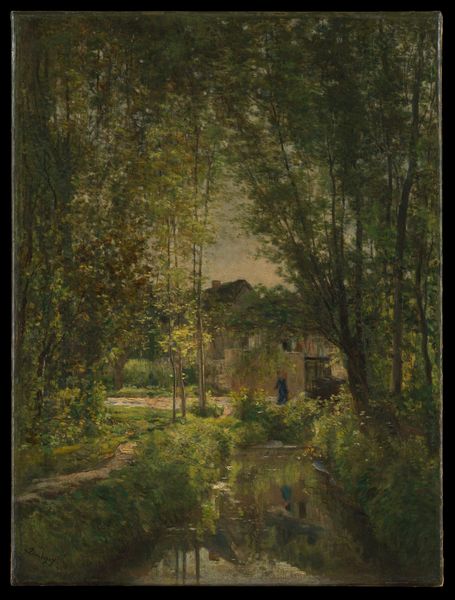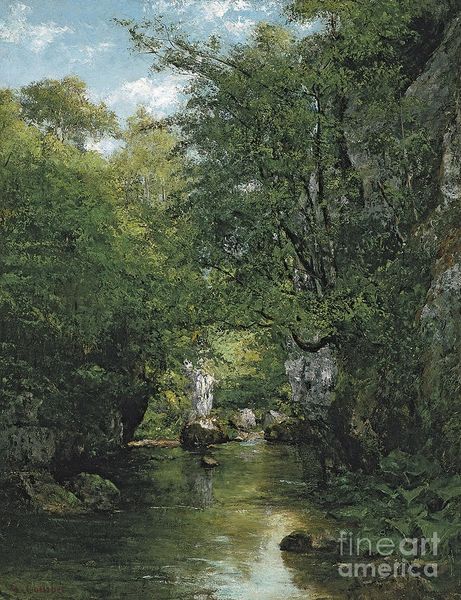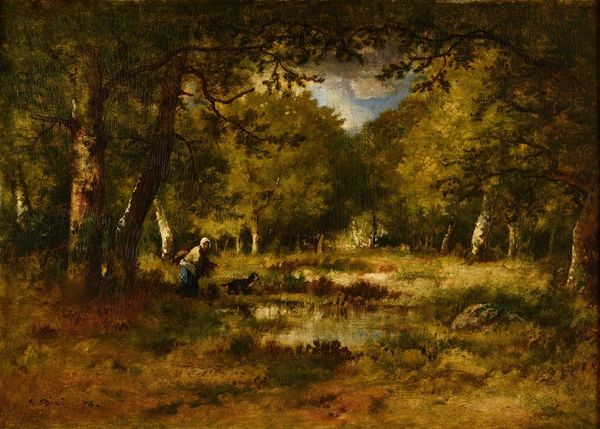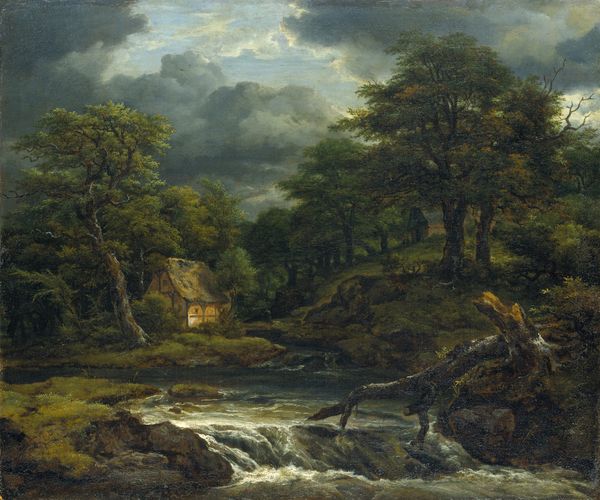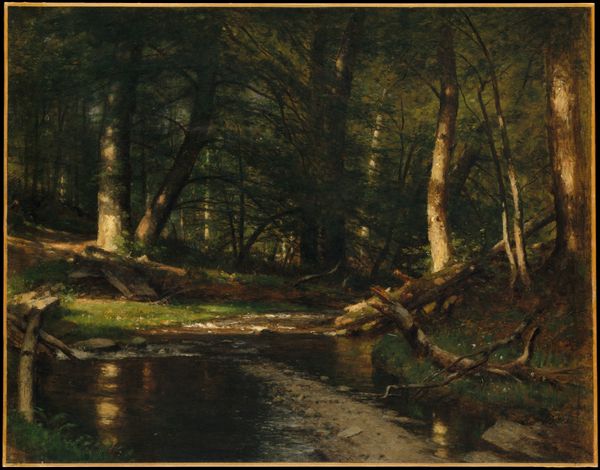
The Rocky Path in the Morvan (Chemin des roches dans le Morvan) 1869
0:00
0:00
Dimensions: 37 5/8 x 63 1/4 in. (95.6 x 160.7 cm)
Copyright: Public Domain
Curator: Harpignies' "The Rocky Path in the Morvan," painted in 1869, is currently housed at the Metropolitan Museum of Art. He really captured the changing rural landscape of the time. Editor: It's a fairly large painting, and its immediate effect is incredibly calming. The balance between the dense foliage and the brightness beyond is quite remarkable. Curator: Absolutely. Harpignies was working during a time of great social and political upheaval in France. Rural subjects gained importance amidst industrialization and urbanization. The Morvan region itself became a kind of symbol for preserving traditional ways of life. Editor: Look at how the light filters through the leaves—it almost vibrates! Harpignies expertly used lighter hues to bring brightness into the shadowed foreground, contrasting with the deeper greens of the woods, guiding your eyes through the landscape. Curator: That focus on light is so central to the Barbizon school. The government invested heavily in these forests for resource management, leading to an increased public awareness of their environmental and economic value. Harpignies, as with many artists of his time, capitalized on this developing ecological consciousness. Editor: I'm particularly drawn to how he captures the textures—the rugged rocks covered in moss, the smooth flow of the water, even the bark on the trees. Curator: His compositions deliberately present nature as accessible, almost idyllic. In his time, this painting was likely read as a reminder of an inherent connection to the land as political tensions rose around industrial labor and social reforms. Editor: It’s a fascinating dialogue between naturalism and idealization. There’s something universally appealing about the peace he creates. Curator: Considering its historic context and impact on perceptions of the French countryside, Harpignies’ painting remains a vital contribution to our understanding of 19th-century social and environmental thought. Editor: Yes, beyond the immediate impression, the artist provides a view of our own gaze, and that's valuable indeed.
Comments
No comments
Be the first to comment and join the conversation on the ultimate creative platform.
